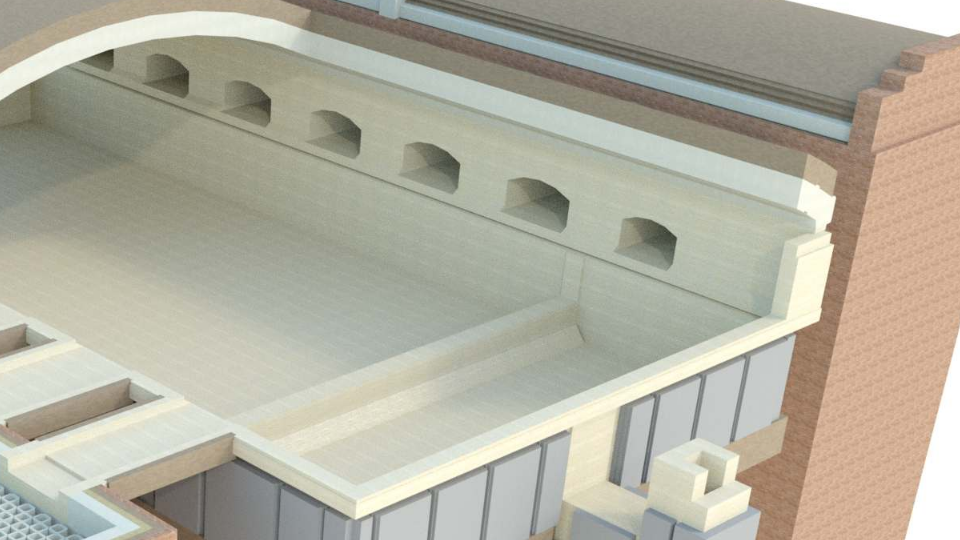The single doghouse is situated on the furnace rear wall, and the batch is usually charged over almost the complete tank width.
The two regenerators are situated along the furnace sidewalls with the number of burner ports depending on the furnace design.
For cross-fired furnaces, there are several types of regenerators. One of them is the common box – a big regenerator chamber – all ports of a furnace side are connected to it. Alternatively, partially sectioned chambers can be installed. The regenerator is divided into two (or more) parts separated by a division wall. This allows for different firing adjustments in the ratio between these sections.
When using full sectional chambers, there is one section for each burner port, which is completely separated from the other chamber sections. Thus, each port can be adjusted separately. Float furnaces are characterised as regenerative cross‐fired furnaces with a large melting area. They meet the requirements for high glass quality necessary for automotive, coating and architectural applications. They can produce clear glass, extra clear glass, solar glass, and coloured glass for automotive applications.
A unique design feature of this furnace is the downstream by a waist connected to the working end. The equipment is responsible for the thermal homogenisation and conditioning of the glass. This characteristic allows the furnace to achieve the glass quality and temperature required.
In general, float furnaces have a melting capacity from 400 up to 1200 t/24h. They are provided with different installed equipment like electric and oxy-boosting and other heating systems for natural gas, oil, LPG, and oxy-fuel.
ADVANTAGES
- Temperature more easily adjustable
- Very high pulls possible
- Low energy consumption: 1.4 – 1.8 kWh/kg
- High glass quality
CHARACTERISTICS
- Typical glass type: soda-lime glass
- Typical products:mainly float glass, but also containers (bottles, jars) and rolled plates (ornamental glass, solar glass)
- Performance: 200 – 1000t/24h, float glass up to 1200t/24h
- NOx emission: 1000 – 1800 mg/Nm3 (dry, 8% O2)
